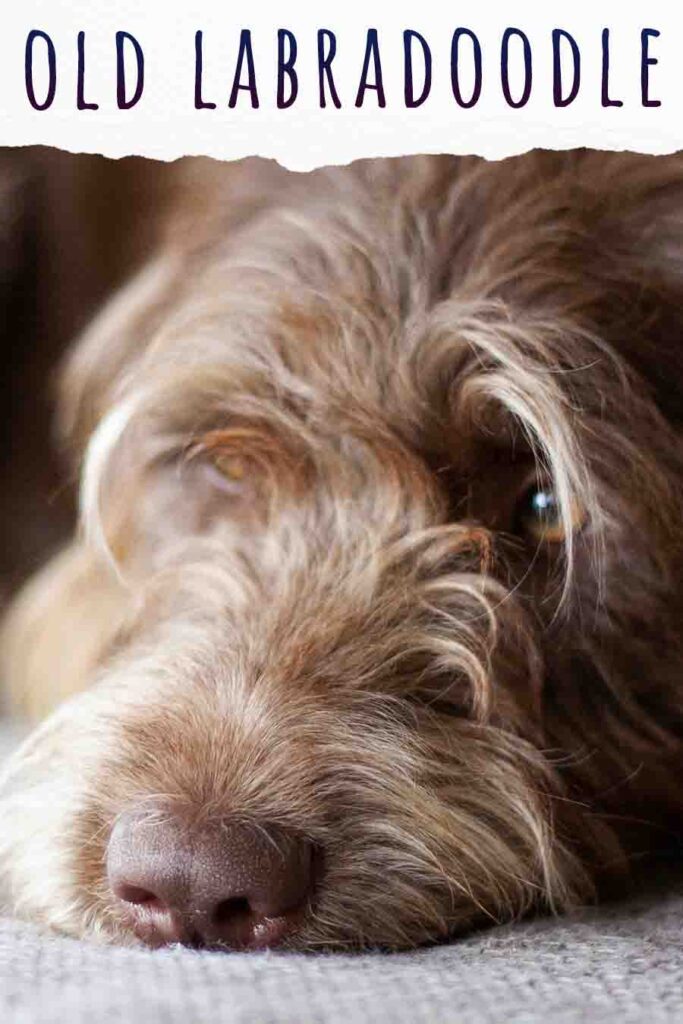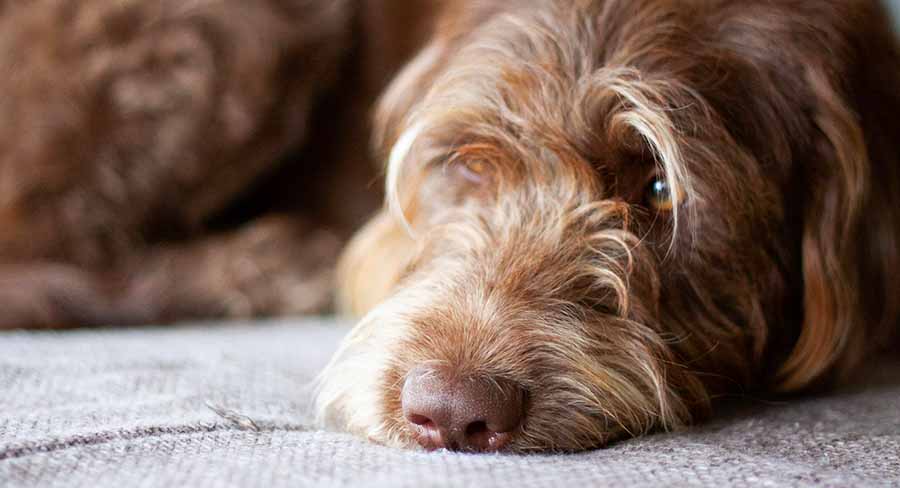In this guide to your old Labradoodle, we’re going to take a closer look at how long Labradoodles live, when they’re considered senior dogs, and how to best care for your Doodle.
- How long do Labradoodles live?
- When is a Labradoodle considered old?
- Caring for an Old Labradoodle
- Old Labradoodle products and accessories
An old Labradoodle will have slightly different care needs to their younger selves. You will need to adjust their food and their daily routines, including the type of exercise they get. Many Labradoodles live into their teens, so your Doodle might not start showing signs of slowing down until they reach at least ten years old.
How Old Do Labradoodles Live?
There are plenty of studies that look into the average age of purebred dogs. But, this data is less common for mixed breeds! Perhaps because they’re still so new to the scene compared to many purebred dogs. However, studies have found that mixed breeds tend to live longer, on average, than their purebred parents.
The typical Labradoodle mix will come from a Labrador and Poodle cross. Both of these parent breeds lives to 12 years on average. So, you can expect their offspring to live longer, particularly if they come from a good breeder. Things are a little more complicated with Australian Labradoodles, since up to 6 purebred dogs are used to create this mix. But, on average, Australian Labradoodles will often live into their teens. You can find more information on longevity in this guide to Labradoodle lifespan
When is a Labradoodle Considered Old?
There is no specific age when your dog will turn into an “old dog”. This is a gradual process, and it can vary from one Labradoodle to the next. For the purebred Labrador and Poodle parents, most veterinarians and dog food companies consider these dogs to be seniors when they reach 7 years old. So, the same may be said of Labradoodles.
This might seem quite young to be calling your dog a senior! And, your dog may not yet be showing signs of their age, such as slowing down or grey hairs. Of course, it’s a great idea to speak to your veterinarian about your ageing Labradoodle. They will be able to help you decide the best way and time to start thinking about changing your care routines to support an older dog.
Caring for an Old Labradoodle
As your Labradoodle grows, the best ways to care for them will also change. Just like the transition from puppyhood to adulthood, a senior Labradoodle will require different types of food, different activity levels, and slight changes in their entire lifestyle. Making these changes can help your Labradoodle extend their senior years, but it will also help them to age in comfort! Here are some common areas where you may need to adjust your care to support your elderly Doodle.
Old Labradoodle Diet
Dog food designed for seniors will often include additional ingredients to support an ageing Labradoodle. Many contain higher protein levels, glucosamine or chondroitin to support their joints, and antioxidants to support their memory and brain function as they age. Most commercial dog foods have a senior variety, but you should transition to this slowly, to avoid giving your old Labradoodle an upset stomach.
Some older Labradoodles will also benefit from a transition to wet food, which will be more gentle on their teeth than hard, crunchy kibble.
If you make homemade dog food, be sure to speak to your vet before adding in any supplements. It’s important to choose the right ones, and to add them in the correct quantities to avoid any health complications.
A healthy weight is also very important for older dogs and their health. So, if your Labradoodle is a little overweight, you might want to make a plan with your veterinarian to fix this issue.

Old Labradoodle Activity Levels
Labradoodles are prone to joint problems, like their parent breeds. This includes arthritis and hip and elbow dysplasia. So, your Labradoodle might start to struggle with the same level of exercise as they age. You can change the type of exercise your dog does to try and support their joints. For instance, swimming will be more gentle on their joints than running or jumping.
Older dogs will likely start to sleep more throughout the day. But, they will still have clever brains that can become easily bored. So, it’s important to find outlets for your Labradoodle’s energy that won’t cause any issues to their ageing body. Interactive toys are a great choice, as are dog sports like scentwork. Old dogs can certainly learn new tricks! It might take them a little longer, but they will certainly enjoy the time spent training with you!
Old Labradoodle Products and Accessories
As your Labradoodle grows, you may also want to make changes around the house to make their life easier. For instance, you can invest in a dog ramp if you like to share your couch with the dog. This prevents jumping up, which can hurt an elderly Labradoodle’s joints.
Another great product is an orthopaedic dog bed. These are designed to help older dogs that are experiencing joint problems, like many senior Labradoodles will. They will be easy for dogs to climb in and out of, made of a supportive material such as memory foam, and will often have raised edges for your dog to rest on. Some of these beds also have cooling material, or easily washable material, in case your older dog is prone to accidents.
Old Labradoodle – A Summary
An old Labradoodle is just as loving and full of personality as a younger Doodle. By taking the steps above, you can help to keep your Labradoodle comfortable in their older years, and to stretch their life as long as possible! Do you have an older Labradoodle at home? We would love to hear about your senior Doodles in the comments!
Readers Also Liked
- Fat Labradoodle
- Labradoodle Hip Score
- How Much Exercise Does A Labradoodle Puppy Need?
References and Resources
- Urfer, S. (et al), ‘Risk Factors Associated with Lifespan in Pet Dogs Evaluated in Primary Care Veterinary Hospitals’, Journal of the American Animal Hospital Association (2019)
- Adams, V. (et al), ‘Methods and Mortality Results of a Health Survey of Purebred Dogs in the UK’, Journal of Small Animal Practice (2010)
- Farrell, L. (et al), ‘The Challenges of Pedigree Dog Health: Approaches to Combating Inherited Disease’, Canine Genetics and Epidemiology (2015)
- Salvin, H. (et al), ‘Growing Old Gracefully – Behavioral Changes Associated with “Successful Aging” in the Dog’, Journal of Veterinary Behavior (2011)
- Lee, S. (et al), ‘Snifftrail: A New Way of Interacting with your Senior Dog by Using Nose Work and Impulse Control Training’, Delft University of Technology (2017)

